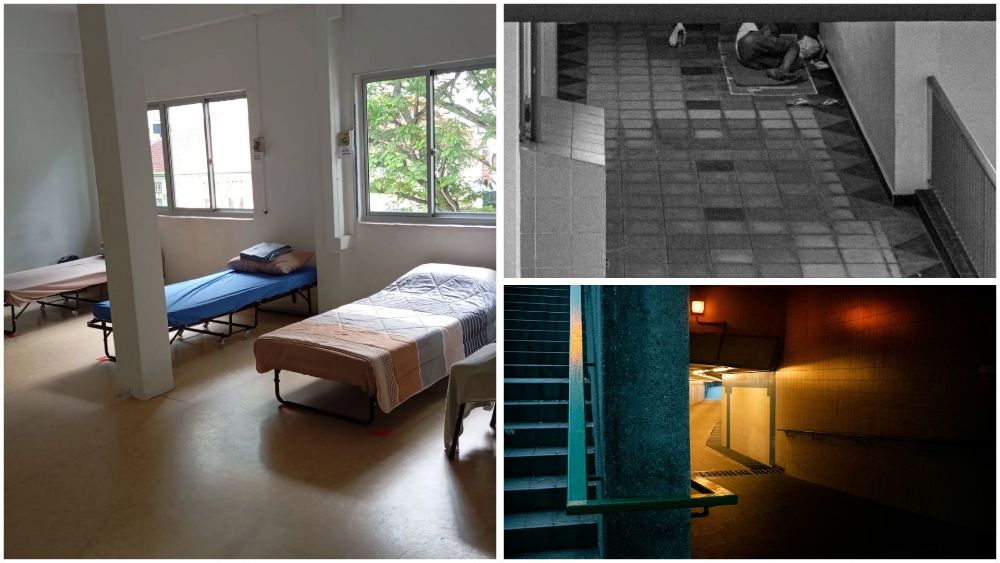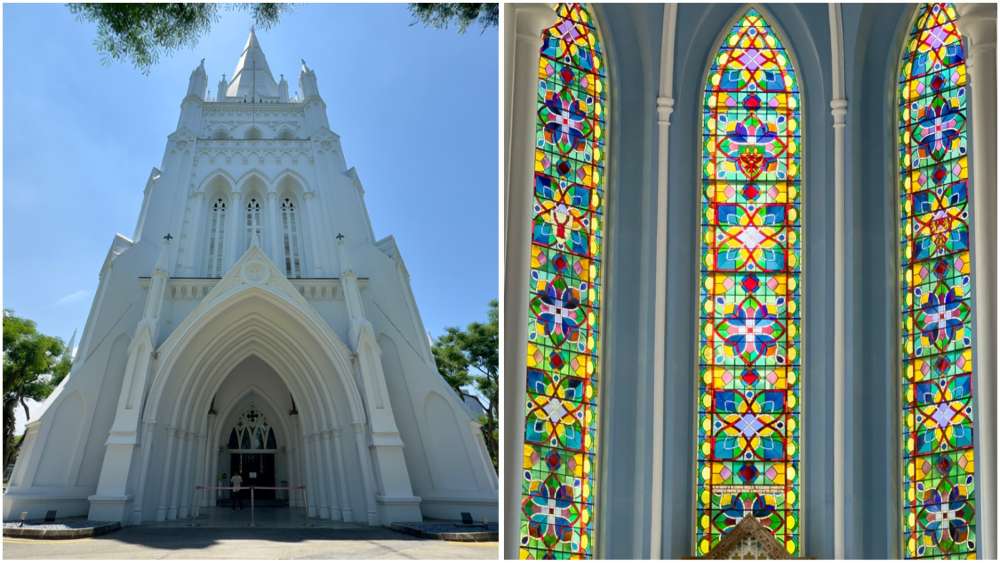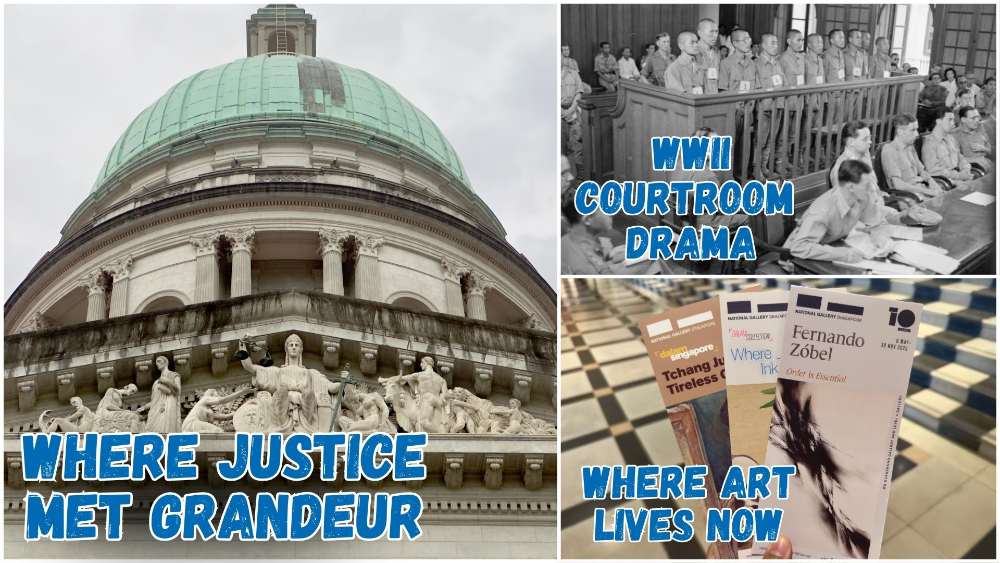National Monuments Of Singapore: Saint Andrew's Cathedral
What is a National Monument? Who gazettes them? How many national monuments are there in Singapore? To date, the Preservation of Sites and Monuments, a division of National Heritage Board, has identified and gazetted 75 buildings, structures and sites of national significance as an integral part of Singapore’s built heritage.
And we're here to tell you all about them - one National Monument at a time!
You've probably passed by or stepped into more than a few of them without realising they were National Monuments: Al-Abrar Mosque, Asian Civilisations Museum, the Civilian War Memorial, Saint Andrew's Cathedral, the Esplanade Park Memorials, Fort Siloso on Sentosa - no need to plan an itinerary for friends visiting from overseas; just show them this article ✌️
In this edition, we throw the spotlight on Singapore's largest cathedral and oldest surviving Anglican place of worship: Saint Andrew's Cathedral.
📍 Location
Saint Andrew's Cathedral was gazetted as the 3rd National Monument of Singapore, and is located near other National Monuments such as the Civilian War Memorial, Former City Hall, Former Supreme Court, and more. The MRT stations nearest to Saint Andrew's Cathedral are City Hall, and Esplanade.
📅 Significant dates
Dates built:
- 1835-1836: The original church was built on its present site between North Bridge Road and St. Andrew's Road
- 1856-1861: The current building was constructed
Milestones:
- 9 Nov 1835: The foundation stone of the original church building was laid
- 18 Jun 1837: The first church service was conducted by its first chaplain, Reverend Edmund White
- 4 Mar 1856: The foundation stone of the present church was laid by the Right Reverend Daniel Wilson, Lord Bishop of Calcutta
- 1 Oct 1861: The present church's first service was conducted
Date gazetted: 28 Jun 1973
📜 History
Saint Andrew’s Cathedral is the principal Anglican church in Singapore, acting as the central church for 27 parishes and over 55 congregations. While the church has existed on this site since 1836, the present structure was built between 1856 and 1861.
Fun fact: the original chapel was destroyed by not one, but two lightning strikes - once in 1845 and again in 1849!
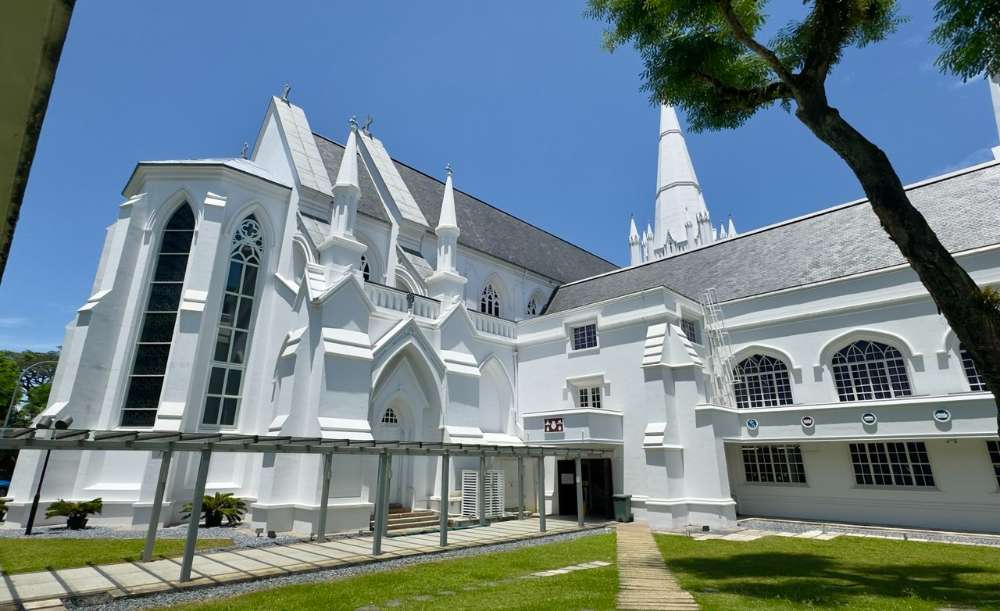 IMAGE: NG KAI
IMAGE: NG KAI
The original building: Saint Andrew's Church
Sir Stamford Raffles had originally allocated a piece of land between Hill Street and North Bridge Road for an Anglican church in his Town Plan of 1822. However, construction of the church only began after funds were raised by the community in 1834. In honour of the local Scottish community who raised the initial funds, the building was named Saint Andrew's Church, after the patron saint of Scotland.
The church was then built between North Bridge Road and St Andrew's Road. It is believed that the land on which the church was built was donated by Singapore’s first Arab settler, Syed Sharif Omar bin Ali Al-Junied, who was a trader and landowner.
The foundation stone of the original church was laid on 9 Nov 1835. The building was designed by George D. Coleman (who had also designed the Armenian Church) and construction was completed in 1836. The first church service was held on 18 Jun 1837, and was conducted by its first chaplain, Reverend Edmund White. The building was subsequently consecrated on 10 Sep 1838 by Bishop Daniel Wilson of Calcutta.
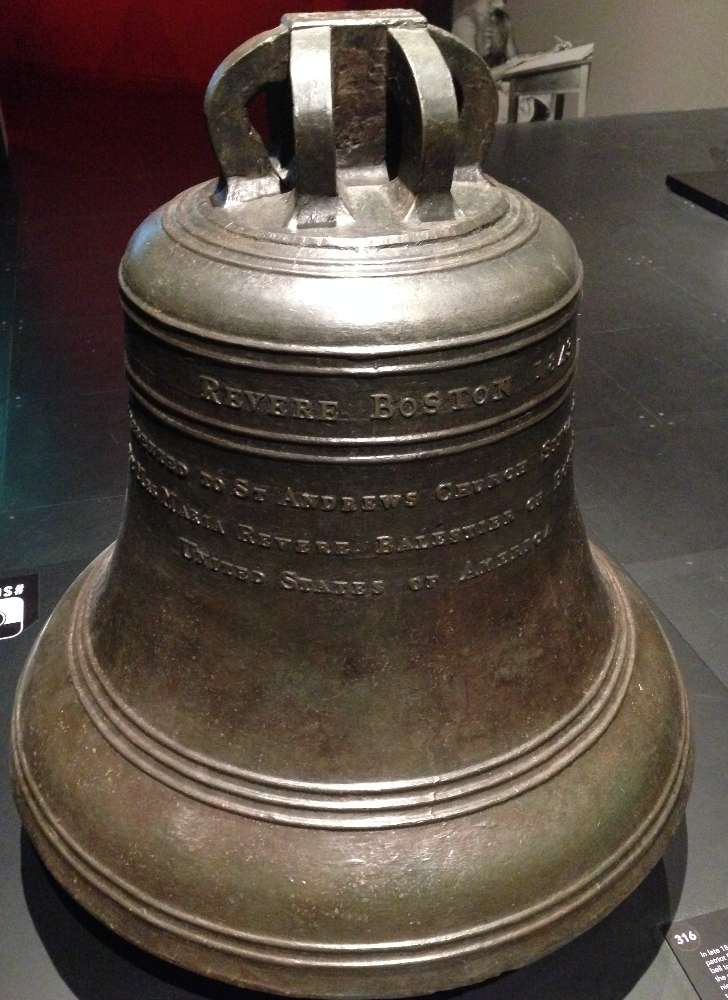
This unique church bell, named the "Revere Bell", was donated by Maria Revere in 1843, the wife of American Consul Joseph Balestier. | IMAGE: WIKIMEDIA COMMONS/@SMUCONLAW
Carved on the bell are the words “Revere Boston 1843”, which led to it being known as the Revere Bell. It is currently housed in the National Museum.
In 1842, John Turnbull Thomson (Government Surveyor of the Straits Settlements from 1841 to 1853) added a tower and spire to the church building. Unfortunately, the spire was struck by lightning twice - once in 1845 and a second time in 1849 - as no lightning conductor had been installed.
Due to the damage caused by the lightning, the building was considered unsafe and closed in 1852. It was eventually demolished in 1855.
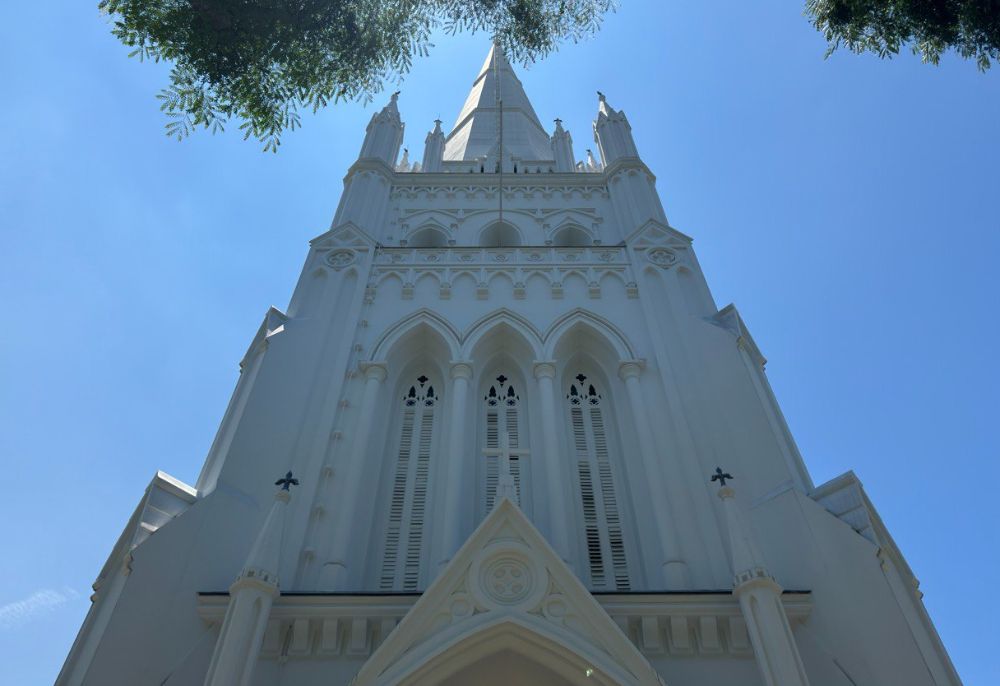 IMAGE: NG KAI
IMAGE: NG KAI
The second and present building: Saint Andrew's Cathedral
On 4 Mar 1856, the foundation stone of the present building was laid by the Right Reverend Daniel Wilson, Lord Bishop of Calcutta. It was built between 1856 and 1861, with the first service held on 1 Oct 1861. On 25 Jan 1862, the church building was consecrated by the Right Reverend George E. L. Cotton.
In 1870, the church was consecrated as a Cathedral Church of the United Diocese, by Archdeacon John Alleyne Beckles. In 1889, the Revere Bell was replaced by a new peal of bells named Saint Matthew, Saint James, Saint John, Saint Paul, Saint Peter, Saint Thomas, Saint Bartholomew and Saint Andrew.
During the Japanese Occupation from 1942-1945, the cathedral nave was temporarily converted into a hospital to treat the wounded. Throughout most of the war years, the cathedral still remained open for services
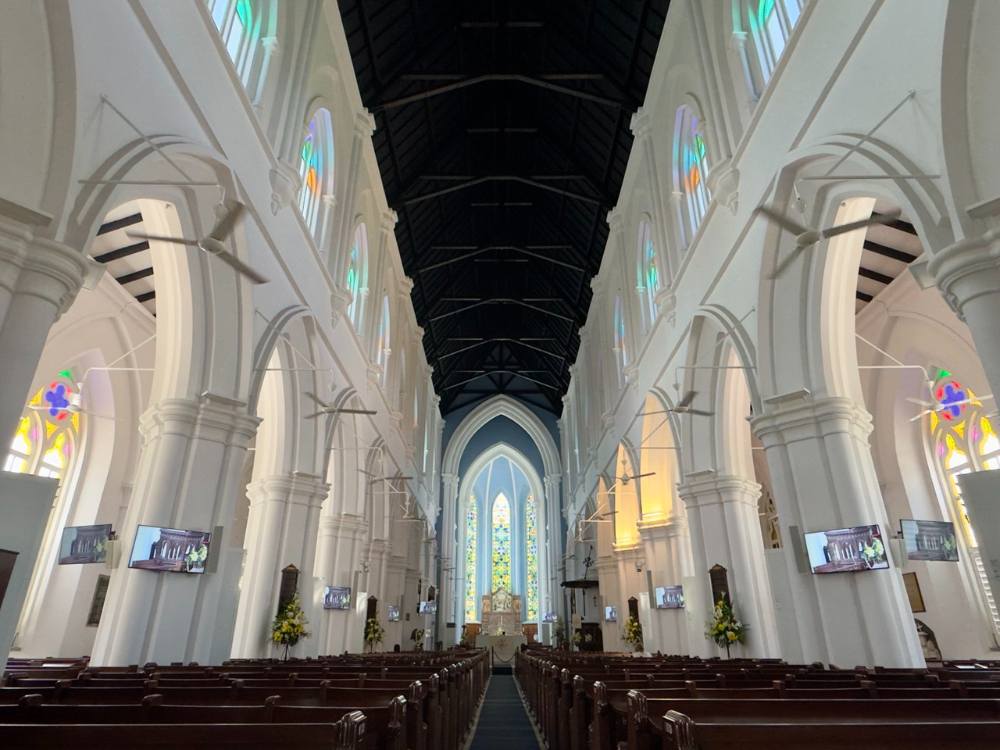 IMAGE: NG KAI
IMAGE: NG KAI
📐 Design and architecture
Today, the 68.58m long and 35.5m wide building is one of Singapore’s few surviving examples of English Neo-Gothic architecture. Designed by Lieutenant-Colonel Ronald MacPherson, its belfry, with lancet-shaped windows and elegant spires, resembles that of the famous Salisbury Cathedral in England. The porte-cochere (carriage porch) is located under the steeple, offering churchgoers and visitors shelter from the tropical heat.
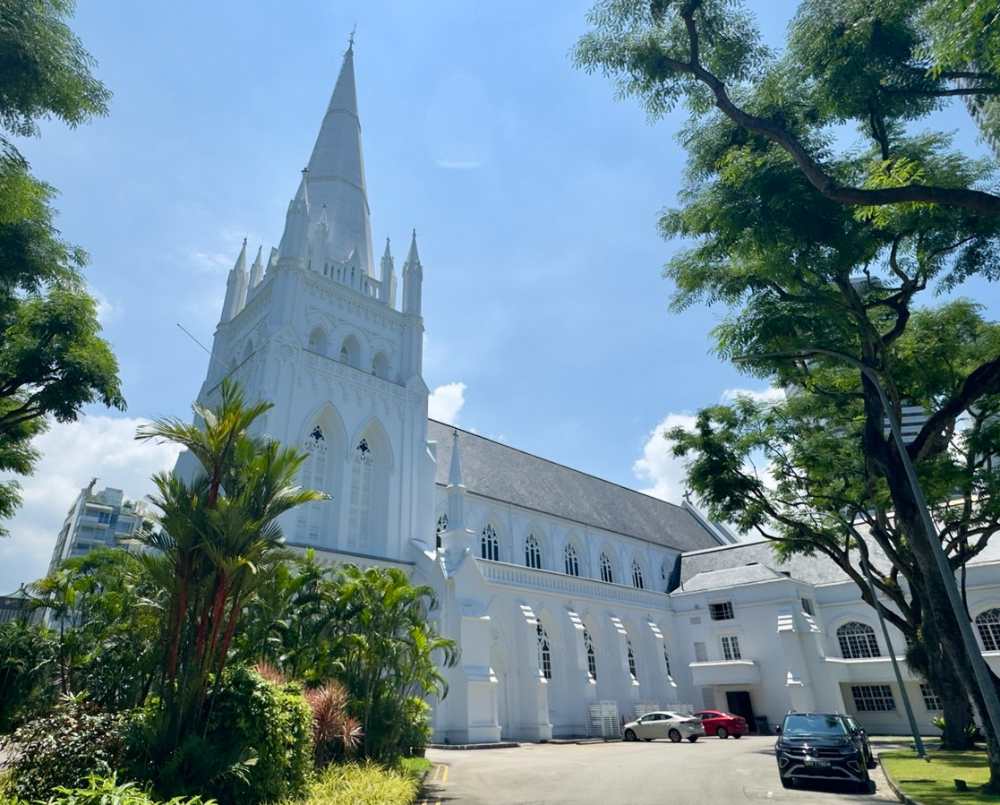 IMAGE: NG KAI
IMAGE: NG KAI
During construction of Saint Andrew's Cathedral, MacPherson was transferred elsewhere, and hence, the completion of the building fell on three government officials: Major John F. A. McNair (who designed the Istana), John Bennett, who also designed the Town Hall (now known as Victoria Theatre) and Raffles Lighthouse; and W. D. Bayliss, Superintendent of Works and Surveys.
The structure consists of a nave (the long, central part of a church building) with north and south aisles, crossed by a transept (the part that crosses the nave at right angles to create the two arms of a cross) providing side porches.
The building features Madras chunam plaster – a mixture made from shell lime, egg white, coarse sugar, and water in which coconut husks had been steeped. After drying, the plastered walls and columns were polished with rock crystal or rounded stones, and dusted with fine soapstone powder, giving the building a remarkably smooth and glossy surface.
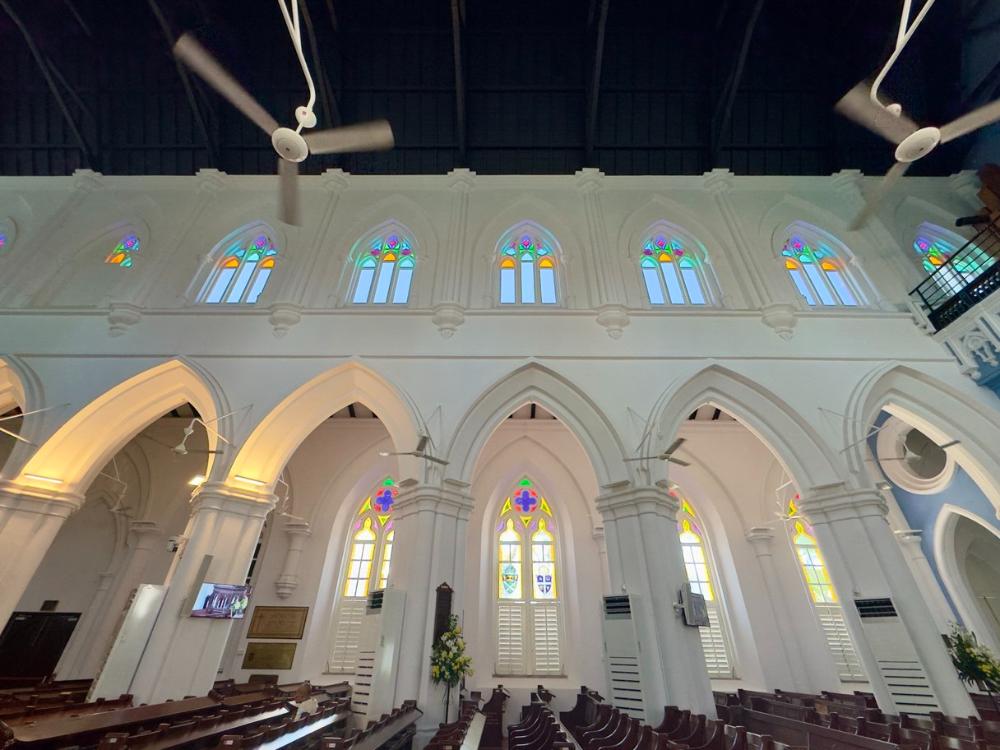 IMAGE: NG KAI
IMAGE: NG KAI
The two-storey nave has aisle arcades surmounted by clerestory windows (the series of windows in the upper part of the nave) that illuminate the interior with natural light. In the sanctuary stands a high altar with an altarpiece depicting the Nativity of Jesus, which is flanked by the images of Saint Peter and Saint Andrew.
Sir Cecil C. Smith, then-Governor of the Straits Settlements, donated the wooden pulpit, which was carved and crafted in Ceylon (today's Sri Lanka). A cross hangs behind the pulpit; it was made with nails from the ruins of Coventry Cathedral in England, which was bombed and destroyed in 1940 during the Second World War.
Along the walls of the nave are memorial plaques commemorating former members of the congregation, including the military personnel who had sacrificed their lives during the two World Wars.
🕖 Opening hours
Regular visiting hours: 7am to 8pm daily. Closed on selected Public Holidays. Find out more here.
🎟️ Admission
Entry is free.
For the latest updates on Wonderwall.sg, be sure to follow us on TikTok, Telegram, Instagram, and Facebook. If you have a story idea for us, email us at [email protected].





